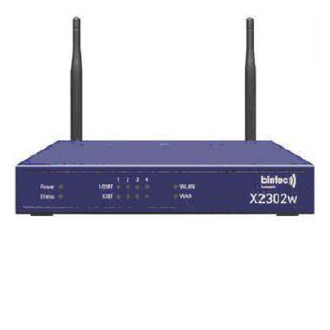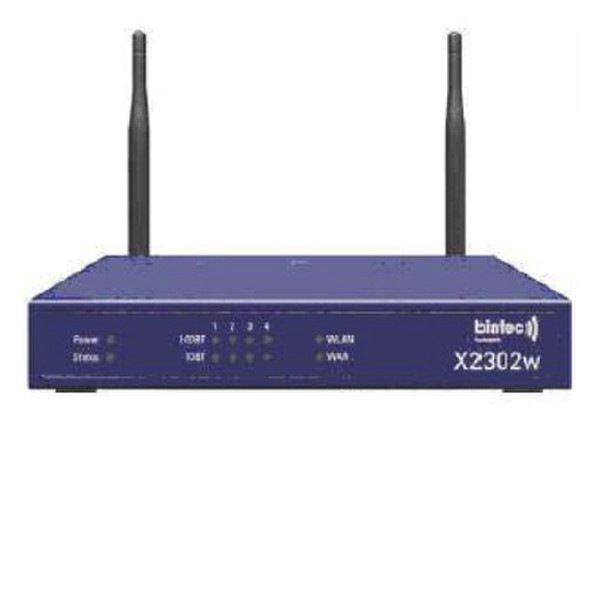Catalog
-
Catalog
- Antiquitäten & Kunst
- Auto & Motorrad: Fahrzeuge
- Baby
- Business & Industry
- Bücher
- Camping & Outdoor
- Feinschmecker
- Garden & patio
- Haustierbedarf
- Heimwerken & Garten
- HiFi & Audio
- Home, Construction, Renovation
- Household appliances
- Kleidung & Accessoires
- Modellbau
- Musik
- PC- & Videospiele
- Photo & camcorders
- Sammeln & Seltenes
- Spielzeug
- TV, Video, DVD
- Telekommunikation
- Uhren & Schmuck
- Wellness & Beauty
- computers & electronics
- entertainment & hobby
- fashion & lifestyle
- food, beverages & tobacco
- health & beauty
- institutional food services equipment
- medical equipment, accessories & supplies
- office
- sports & recreation
- vehicles & accessories
- weapons & ammunition
Filters
Search

Funkwerk WLAN X2302W WIRELESS ROUTER/SWITCH UPTO ADSL2+ ANNEX B wireless router
MPN: 20995
🚚 Select the country of delivery:
Delivery from:
Germany
Sale and delivery by:
Where to buy and prices (Advertising *)
On Top
Technical specifications
On Top
Security
| Authentication method | RADIUS, PAP, CHAP, TACACS+, MS-CHAP, MS-CHAP v.2 |
|---|
Networking
| Switching protocols | Ethernet |
|---|---|
| Routing protocols | RIP-1, RIP-2 |
| Data link protocols | Ethernet, Fast Ethernet, IEEE 802.11b, IEEE 802.11g |
| Management protocols | SNMP |
Other features
| Digital signal protocol | ADSL, ADSL2, ADSL2+ |
|---|---|
| Maximum data transfer rate | 0.1 Gbit/s |
| Interface | ADSL Annex B, ADSL 2, ADSL 2+ |
| Internal memory | 16 MB |
| Flash memory | 4 MB |
Protocols
| Supported network protocols | TCP/IP, L2TP, IPSec, PPPoE, PPPoA |
|---|
BINTEC WLAN X2302W WIRELESS ROUTER/SWITCH UPTO ADSL2+ ANNEX B
The Bintec X2301 and X2302 devices are fully equipped, flexible IP routers with an integrated ADSL modem and a 4-port switch. The X2301 already supports the standards of tomorrow today: ADSL2 and ADSL2+. The X2302 is prepared to support ADSL2 and ADSL2+ (firmware update expected to be available Q1/2005). With ADSL2, you can attain download rates of up to 12 Mbps; with ADSL2+ even up to 24 Mbps. The upload rate for both modes of operation is up to 1 Mbps.
As the only ones in their class, these devices offer not only standard IPSec, but encryption using secure AES (Advanced Encryption Standard) as well as certificate handling (2 active tunnels starting Q1/2005). Such functionalities as IPCOMP (compression in IPSec) and NAT Traversal are standard. Encryption with L2TP is also possible.
The devices are able to work together with a RADIUS server and are able to use PPP authentication and login authentication and to perform the authentication of IPSec partners. The Tacacs+ function fulfills the same purpose and is also implemented.
Instead of simply working with Stateful Packet Inspection (NAT/PAT), the X230x-family devices also offer a full-fledged Stateful Inspection Firewall (SIF), in which more than 70 services are already pre-configured. To complete the range of security features, the device is also equipped with a content filter, which reliably filters out undesired Web contents and does not depend on URLs only*.
The devices do not only work as a PPPoE client, they can also operate as a PPPoE server. This makes it possible to allocate different privileges to individual users within the network. If this function is combined with the "scheduling" function, it is also possible to stipulate the times at which individual users can access the Internet. The VLAN function (also a novelty in this device category) can be used to divide users into virtual sub-networks to further increase the level of security.
Inexperienced users can take advantage of the http Configurations Wizard, while more advanced users can use an HTML interface for the configuration process. SSH-encrypted communication to the device allows for an absolutely secure configuration.
As the only ones in their class, these devices offer not only standard IPSec, but encryption using secure AES (Advanced Encryption Standard) as well as certificate handling (2 active tunnels starting Q1/2005). Such functionalities as IPCOMP (compression in IPSec) and NAT Traversal are standard. Encryption with L2TP is also possible.
The devices are able to work together with a RADIUS server and are able to use PPP authentication and login authentication and to perform the authentication of IPSec partners. The Tacacs+ function fulfills the same purpose and is also implemented.
Instead of simply working with Stateful Packet Inspection (NAT/PAT), the X230x-family devices also offer a full-fledged Stateful Inspection Firewall (SIF), in which more than 70 services are already pre-configured. To complete the range of security features, the device is also equipped with a content filter, which reliably filters out undesired Web contents and does not depend on URLs only*.
The devices do not only work as a PPPoE client, they can also operate as a PPPoE server. This makes it possible to allocate different privileges to individual users within the network. If this function is combined with the "scheduling" function, it is also possible to stipulate the times at which individual users can access the Internet. The VLAN function (also a novelty in this device category) can be used to divide users into virtual sub-networks to further increase the level of security.
Inexperienced users can take advantage of the http Configurations Wizard, while more advanced users can use an HTML interface for the configuration process. SSH-encrypted communication to the device allows for an absolutely secure configuration.
-
Payment Methods
We accept:










